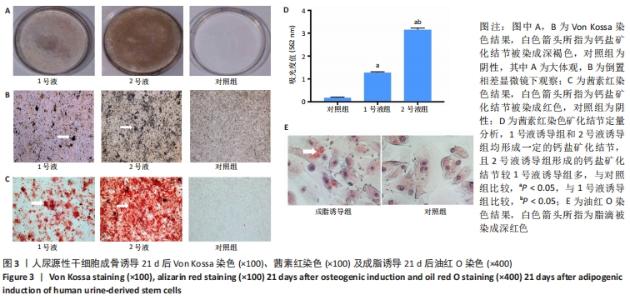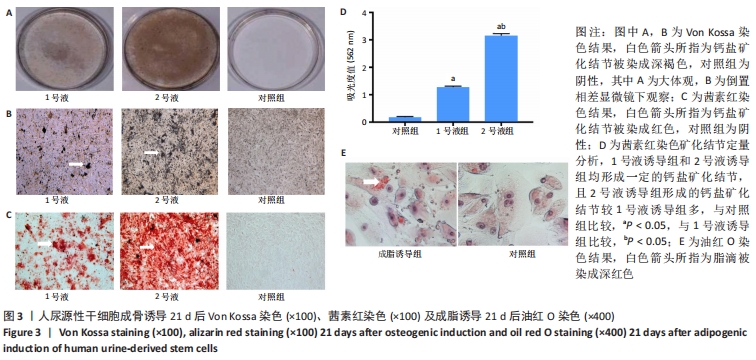[1] HAN C, SUN X, LIU L, et al. Exosomes and Their Therapeutic Potentials of Stem Cells. Stem Cells Int. 2016;2016:7653489.
[2] 李超然,黄桂林,王帅.间充质干细胞来源外泌体促进损伤组织修复与再生的应用与进展[J].中国组织工程研究,2018,22(1):133-139.
[3] SHAO H, IM H, CASTRO CM, et al. New Technologies for Analysis of Extracellular Vesicles. Chem Rev. 2018;118(4):1917-1950.
[4] MATHIEU M, MARTIN-JAULAR L, LAVIEU G, et al. Specificities of secretion and uptake of exosomes and other extracellular vesicles for cell-to-cell communication. Nat Cell Biol. 2019;21(1):9-17.
[5] XIAO J, PAN Y, LI XH, et al. Cardiac progenitor cell-derived exosomes prevent cardiomyocytes apoptosis through exosomal miR-21 by targeting PDCD4. Cell Death Dis. 2016;7(6):e2277.
[6] HUANG JH, YIN XM, XU Y, et al. Systemic Administration of Exosomes Released from Mesenchymal Stromal Cells Attenuates Apoptosis, Inflammation, and Promotes Angiogenesis after Spinal Cord Injury in Rats. J Neurotrauma. 2017;34(24):3388-3396.
[7] FURUTA T, MIYAKI S, ISHITOBI H, et al. Mesenchymal Stem Cell-Derived Exosomes Promote Fracture Healing in a Mouse Model. Stem Cells Transl Med. 2016;5(12):1620-1630.
[8] YU B, SHAO H, SU C, et al. Exosomes derived from MSCs ameliorate retinal laser injury partially by inhibition of MCP-1. Sci Rep. 2016;6: 34562.
[9] ZHANG Y, MCNEILL E, TIAN H, et al. Urine derived cells are a potential source for urological tissue reconstruction. J Urol. 2008;180(5):2226-2233.
[10] Fu Y, Guan J, Guo S, et al. Human urine-derived stem cells in combination with polycaprolactone/gelatin nanofibrous membranes enhance wound healing by promoting angiogenesis. J Transl Med. 2014;12(1):274.
[11] 刘一飞,王宇辰,朱昱,等.尿源性干细胞的外泌体修复骨不连的作用研究[J].上海医学,2019,42(7):411-417.
[12] JIANG ZZ, LIU YM, NIU X, et al. Exosomes secreted by human urine-derived stem cells could prevent kidney complications from type I diabetes in rats. Stem Cell Res Ther. 2016;7(1):24.
[13] WU J, QU Z, FEI ZW, et al. Role of stem cell-derived exosomes in cancer. Oncol Lett. 2017;13(5):2855-2866.
[14] WU Z, ZENG Q, CAO K, et al. Exosomes: small vesicles with big roles in hepatocellular carcinoma. Oncotarget. 2016;7(37):60687-60697.
[15] HE C, ZHENG S, LUO Y, et al. Exosome Theranostics: Biology and Translational Medicine. Theranostics. 2018;8(1):237-255.
[16] EMANUELI C, SHEARN AI, ANGELINI GD,et al. Exosomes and exosomal miRNAs in cardiovascular protection and repair. Vascul Pharmacol. 2015;71:24-30.
[17] SHAO Y, SHEN Y, CHEN T, et al. The functions and clinical applications of tumor-derived exosomes. Oncotarget. 2016;7(37):60736-60751.
[18] 吴静.外泌体提取方法及其miRNA在非小细胞肺癌中的应用[J].国际检验医学杂志,2020,41(15):1872-1875.
[19] DING M, WANG C, LU X, et al. Comparison of commercial exosome isolation kits for circulating exosomal microRNA profiling. Anal Bioanal Chem. 2018;410(16):3805-3814.
[20] YANG XX, SUN C, WANG L, et al. New insight into isolation, identification techniques and medical applications of exosomes. J Control Release. 2019;308:119-129.
[21] 顾磊,戴红卫,周雯雯,等.尿源性干细胞外泌体对移动性牙根吸收修复的影响及其作用机制[J].广西医学,2020,42(22):2960-2964.
|







